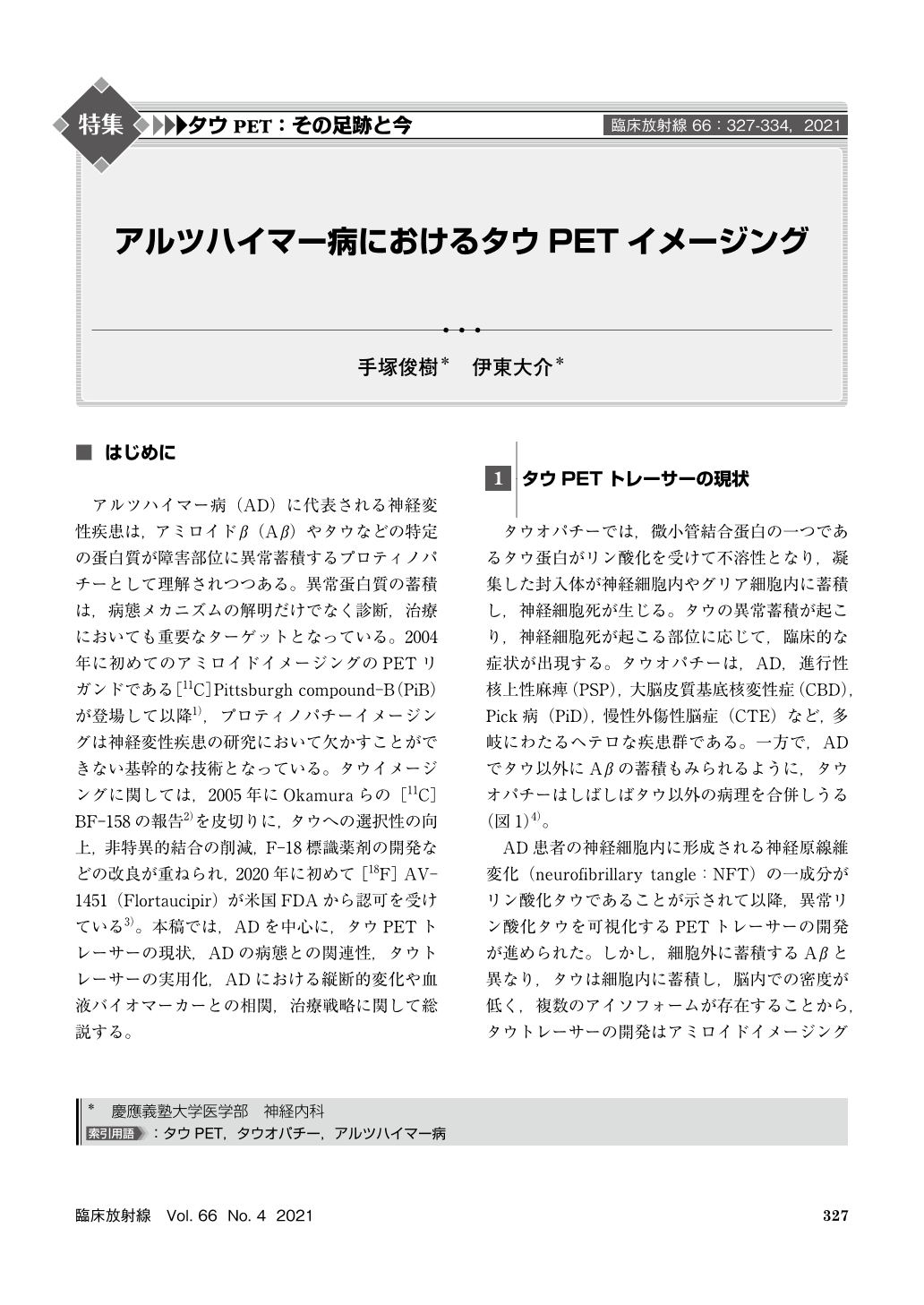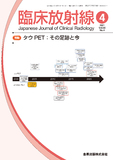Japanese
English
- 有料閲覧
- Abstract 文献概要
- 1ページ目 Look Inside
- 参考文献 Reference
アルツハイマー病(AD)に代表される神経変性疾患は,アミロイドβ(Aβ)やタウなどの特定の蛋白質が障害部位に異常蓄積するプロティノパチーとして理解されつつある。異常蛋白質の蓄積は,病態メカニズムの解明だけでなく診断,治療においても重要なターゲットとなっている。2004年に初めてのアミロイドイメージングのPETリガンドである [11C] Pittsburgh compound-B(PiB)が登場して以降1),プロティノパチーイメージングは神経変性疾患の研究において欠かすことができない基幹的な技術となっている。タウイメージングに関しては,2005年にOkamuraらの [11C] BF-158の報告2)を皮切りに,タウへの選択性の向上,非特異的結合の削減,F-18標識薬剤の開発などの改良が重ねられ,2020年に初めて [18F] AV-1451(Flortaucipir)が米国FDAから認可を受けている3)。本稿では,ADを中心に,タウPETトレーサーの現状,ADの病態との関連性,タウトレーサーの実用化,ADにおける縦断的変化や血液バイオマーカーとの相関,治療戦略に関して総説する。
Neurodegenerative diseases including Alzheimer’s diseases(AD)have recently regarded as proteinopathy in which abnormal protein such as amyloid β and tau pathologically accumulates in the affected brain areas. Tau aggregates are one of key pathological features of AD and other neurodegenerative diseases and became an important target for diagnosis and therapy. Recently, PET probes for tau have been developed for in vivo detection of tau accumulation, but have limitations such as off-target binding and lower ability to detect tau in non-AD tauopathies. As improved repeatedly, the next-generation radiotracers including [18F] MK6240, [18F] PI-2620, and [18F] PM-PBB3 indicate less off-target binding and high specific binding to tau neurofibrils. First in human studies have been conducted with promising results for all tracers in AD patients, and also some positive experience in non-AD tauopathies. In this review, we will discuss the tau PET tracers and their features focusing on AD.

Copyright © 2021, KANEHARA SHUPPAN Co.LTD. All rights reserved.


